Wedding Gowns of the World
rin
Published
07/02/2014
It's an American misconception that all brides long to wear white. In fact, most of the world doesn't. See the diverse and colorful range of wedding wear in our multicultural world.
- List View
- Player View
- Grid View
Advertisement
-
1.
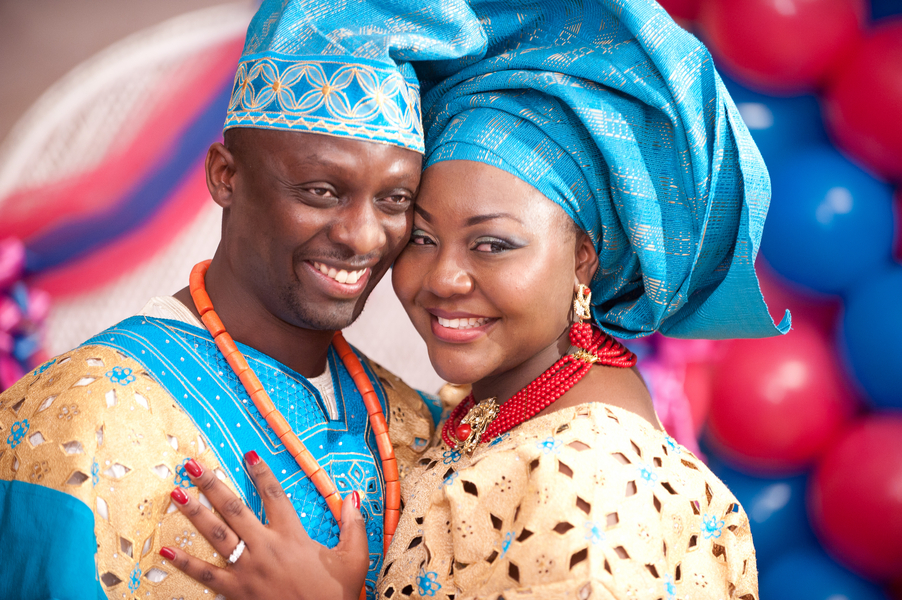 The Nigerian bride will never wear just one ensemble. Almost always the gele, or bubbly head wrap, is also donned.
The Nigerian bride will never wear just one ensemble. Almost always the gele, or bubbly head wrap, is also donned. -
2.
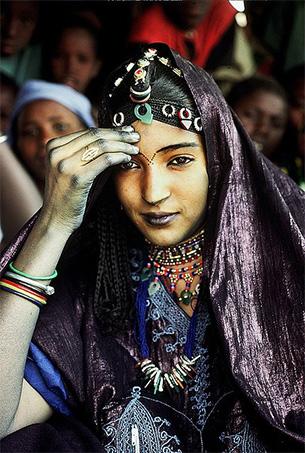 The Tuareg have a beautiful sense of wedding style. They are called the "blue people" for their use of rich blue dyes on skin and clothing. While both bride and groom wear veils for modesty, in everyday life, men continue to wear them habitually.
The Tuareg have a beautiful sense of wedding style. They are called the "blue people" for their use of rich blue dyes on skin and clothing. While both bride and groom wear veils for modesty, in everyday life, men continue to wear them habitually. -
3.
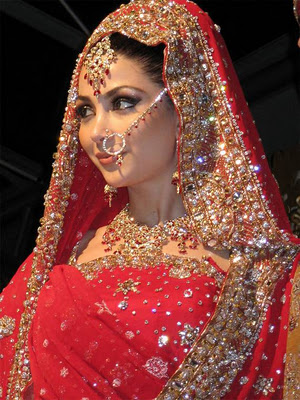 Indian wedding garb is among the most elaborate in the world. Red is the traditional color, as white is reserved for funerals in this culture. Bindhi, henna tattoos, and detailed piercings with connecting chainwear adds to the dramatic effect.
Indian wedding garb is among the most elaborate in the world. Red is the traditional color, as white is reserved for funerals in this culture. Bindhi, henna tattoos, and detailed piercings with connecting chainwear adds to the dramatic effect. -
4.
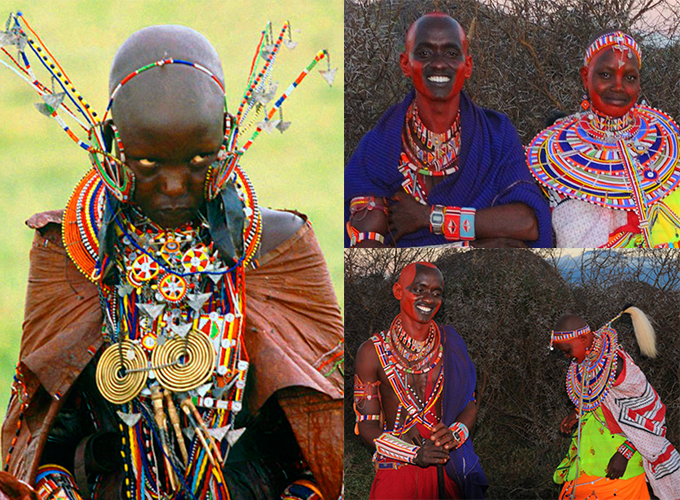 The Maasai of Kenya and Tanzania decorate with traditional brights and handcrafted bead work.
The Maasai of Kenya and Tanzania decorate with traditional brights and handcrafted bead work. -
5.
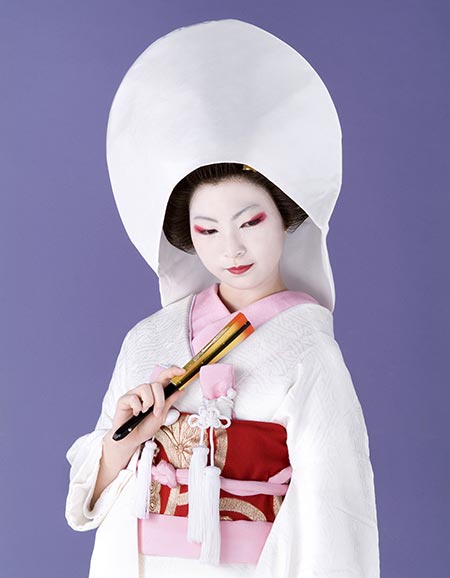 Japanese brides are known to wear head-to-toe white only in cases of traditional Shinto ceremonies. The silk hood, or wataboshi, is to symbolize patience.
Japanese brides are known to wear head-to-toe white only in cases of traditional Shinto ceremonies. The silk hood, or wataboshi, is to symbolize patience. -
6.
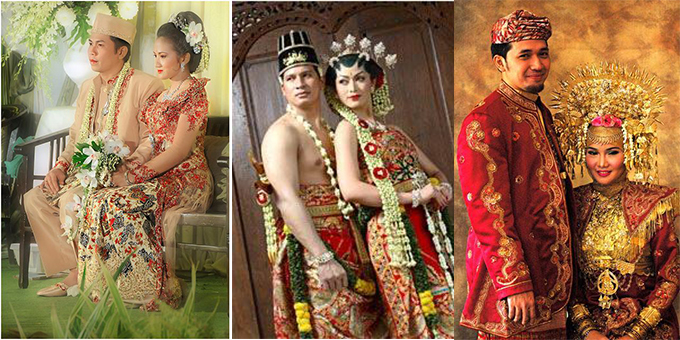 The ceremonies and costuming for each province of Indonesia varies. Although most dresses are made from beautifully patterned silks with golden threads, in almost all cases, the bridal crown is the centerpiece. It can be a large, elaborate piece fit for a queen, or a mix of combs and flowers.
The ceremonies and costuming for each province of Indonesia varies. Although most dresses are made from beautifully patterned silks with golden threads, in almost all cases, the bridal crown is the centerpiece. It can be a large, elaborate piece fit for a queen, or a mix of combs and flowers. -
7.
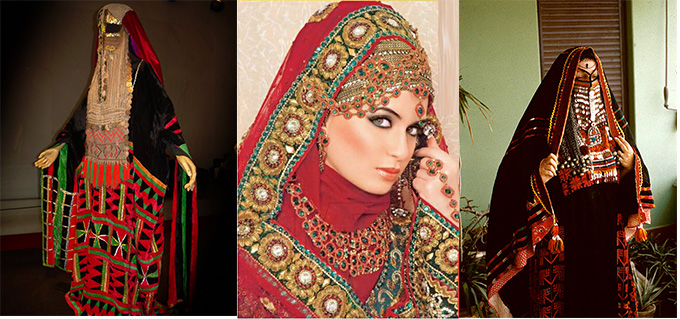 Modern Egyptian weddings will most assuredly involve the Islamic faith. Deep reds, browns, and golds are the choice colors, and the more detail, the better. Oftentimes geometric patterns are incorporated. The bridal style here almost exactly matches that of the Modern Bedouin people, as well.
Modern Egyptian weddings will most assuredly involve the Islamic faith. Deep reds, browns, and golds are the choice colors, and the more detail, the better. Oftentimes geometric patterns are incorporated. The bridal style here almost exactly matches that of the Modern Bedouin people, as well. -
8.
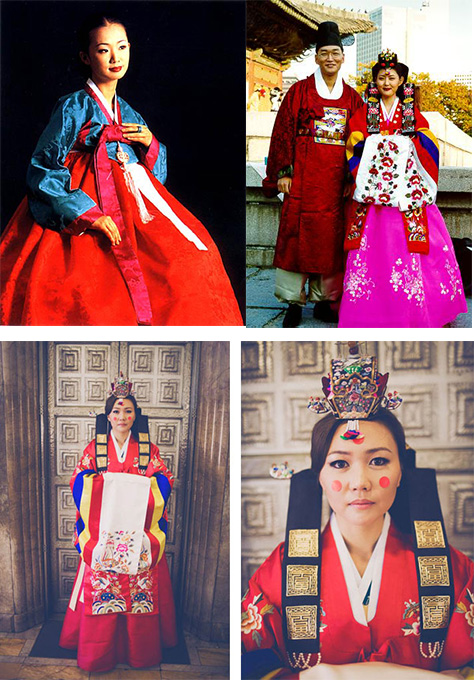 Korean wedding garb is all about color and fullness. Usually the dress consists of two pieces and a sokchima petticoat.
Korean wedding garb is all about color and fullness. Usually the dress consists of two pieces and a sokchima petticoat. -
9.
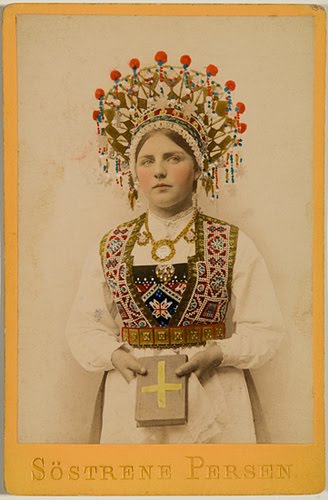 Norwegian bridal dresses are painstakingly embroidered. Colors of red, gold, and white, paired with beautiful golden crowns, add to the regal air of the look.
Norwegian bridal dresses are painstakingly embroidered. Colors of red, gold, and white, paired with beautiful golden crowns, add to the regal air of the look. -
10.
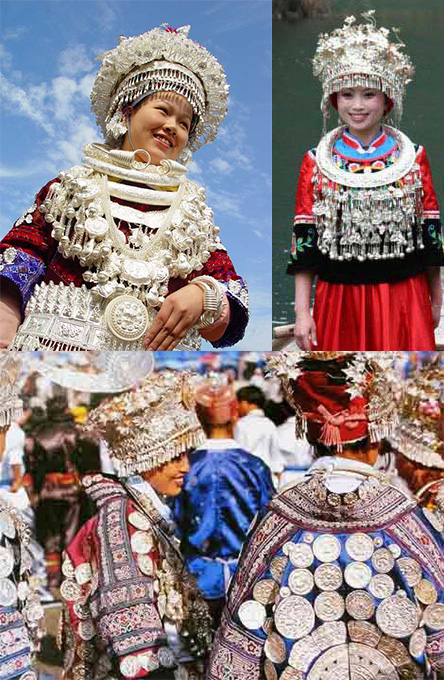 The Miao women of China can spend a year or more embroidering their own wedding gowns. But the sheer variety and individualism of the patterns makes a bold statement. Their gorgeous silver headpieces can weigh up to 7 pounds or more.
The Miao women of China can spend a year or more embroidering their own wedding gowns. But the sheer variety and individualism of the patterns makes a bold statement. Their gorgeous silver headpieces can weigh up to 7 pounds or more. -
11.
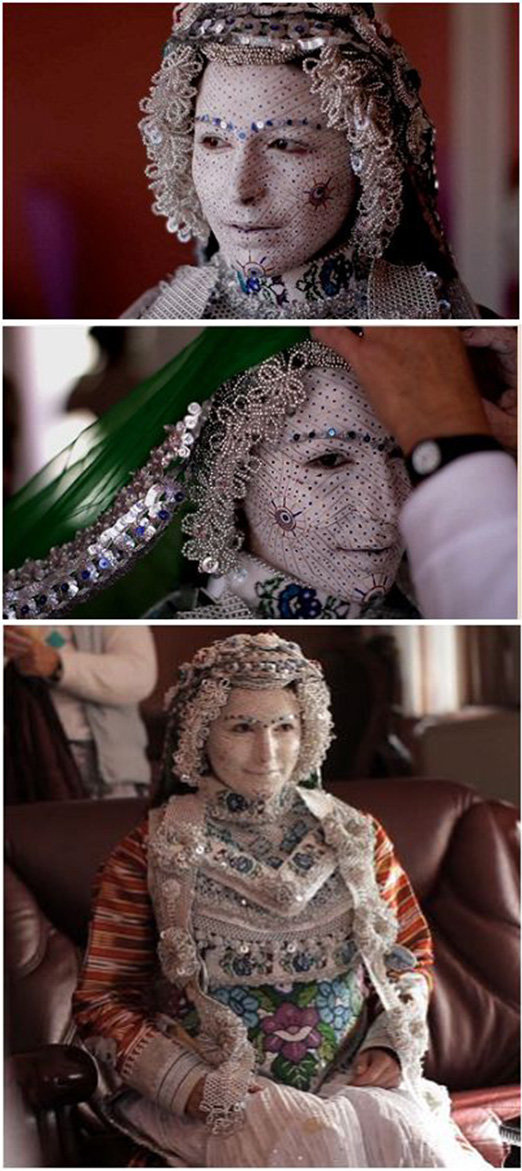 Kosovar wedding garb is jaw-droppingly gorgeous. Clothing and faces alike are painted and glued with sequins to ward off hard luck. It is a time-honored tradition.
Kosovar wedding garb is jaw-droppingly gorgeous. Clothing and faces alike are painted and glued with sequins to ward off hard luck. It is a time-honored tradition. -
12.
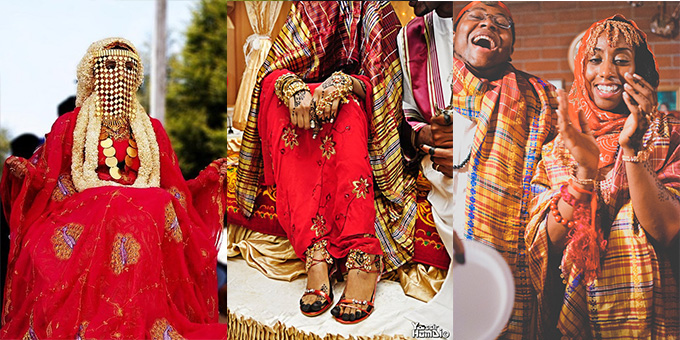 In the Sudan, head-to-toe coverings are the norm, although meticulously applied henna tattoos are also placed the night before. A bride can perform several dances in which she changes gowns for each one.
In the Sudan, head-to-toe coverings are the norm, although meticulously applied henna tattoos are also placed the night before. A bride can perform several dances in which she changes gowns for each one. -
13.
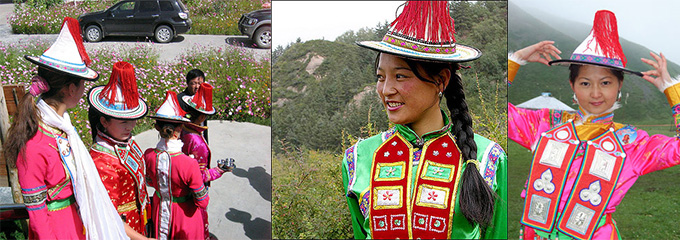 Yugur women of North China are unmistakable in their conical hats and high-collared dresses of super-bright pinks, reds, and greens.
Yugur women of North China are unmistakable in their conical hats and high-collared dresses of super-bright pinks, reds, and greens. -
14.
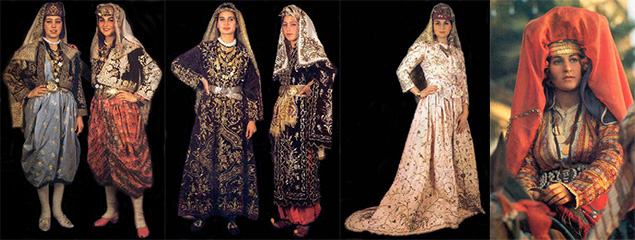 Turkish bridal wear is very Earthy and comfortable-looking, despite the heavy, intricate embroidery. Red is usually popular, since in the past, the color was only reserved for a Sultan's relatives. Only due to Western influence does a Turkish bride actually wear a dress!
Turkish bridal wear is very Earthy and comfortable-looking, despite the heavy, intricate embroidery. Red is usually popular, since in the past, the color was only reserved for a Sultan's relatives. Only due to Western influence does a Turkish bride actually wear a dress! -
15.
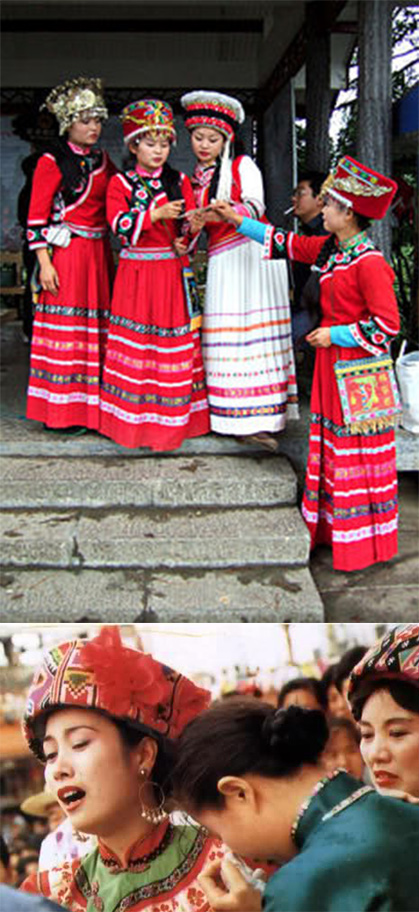 Tujia, also of China, have a tradition where brides cry for up to a month before their wedding. Then they don brightly-patterned brocade dresses they have made themselves. For the rest of their lives, a Tujia woman's wedding dress is her most prized possession.
Tujia, also of China, have a tradition where brides cry for up to a month before their wedding. Then they don brightly-patterned brocade dresses they have made themselves. For the rest of their lives, a Tujia woman's wedding dress is her most prized possession. -
16.
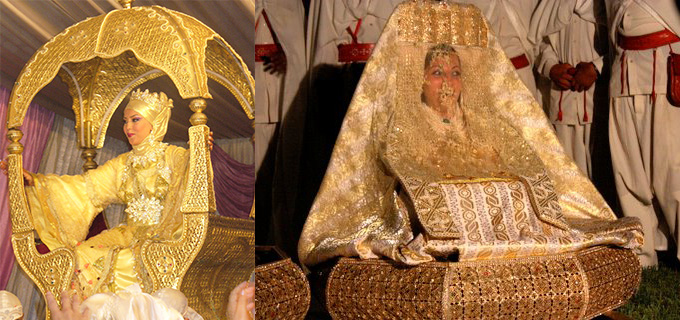 Like in Egypt, Moroccan brides usually have Islamic ceremonies. Yet style is far different. Bright yellow and gold is chosen as a ward for the "evil eye". Jewels are beautiful, and up to four outfit changes can occur during a ceremony. Brides are also carried in on amarias supported by four men.
Like in Egypt, Moroccan brides usually have Islamic ceremonies. Yet style is far different. Bright yellow and gold is chosen as a ward for the "evil eye". Jewels are beautiful, and up to four outfit changes can occur during a ceremony. Brides are also carried in on amarias supported by four men. -
17.
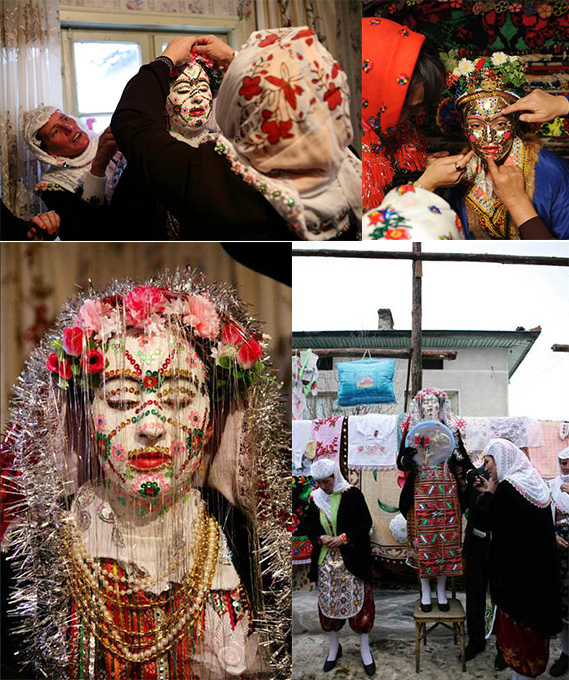 The Pomak are Slavic Muslims within Eastern Europe. Although they number less than half a million, their wedding looks may never be forgotten. Baggy pants with a fitted bodice, elaborate face paint, and tinsel is the look. A bride also must not open her eyes until the couple is blessed by a priest.
The Pomak are Slavic Muslims within Eastern Europe. Although they number less than half a million, their wedding looks may never be forgotten. Baggy pants with a fitted bodice, elaborate face paint, and tinsel is the look. A bride also must not open her eyes until the couple is blessed by a priest. -
18.
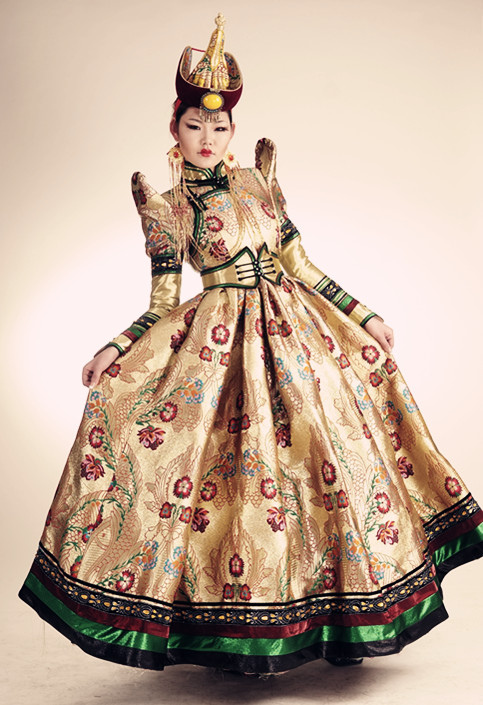 Mongolian bridal gowns may be very brightly colored and include beading. But oftentimes many dresses appear as something from 19th century Europe, as in this picture. But always the ensemble is complete with their flat, round headdress. Since it signifies wealth, it's meant to be large and expensively decorated.
Mongolian bridal gowns may be very brightly colored and include beading. But oftentimes many dresses appear as something from 19th century Europe, as in this picture. But always the ensemble is complete with their flat, round headdress. Since it signifies wealth, it's meant to be large and expensively decorated. -
19.
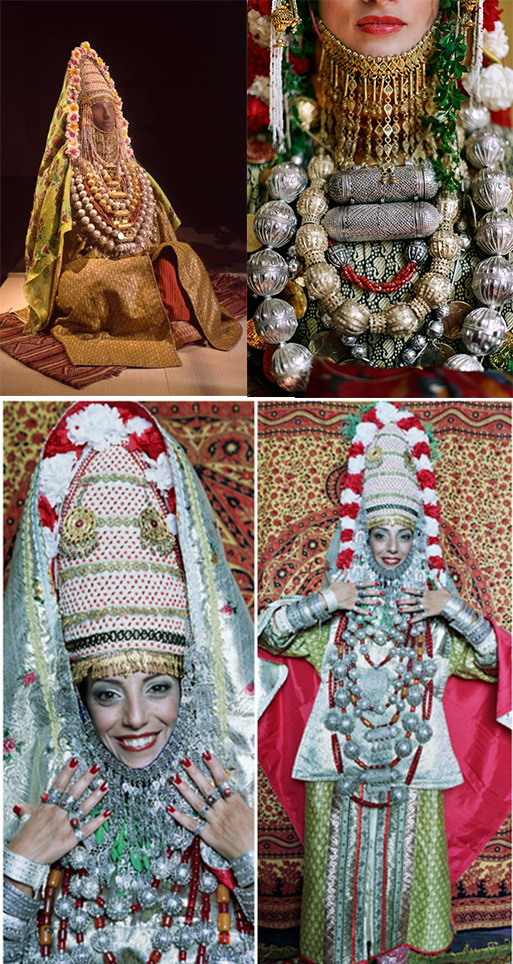 The Jewish brides of Yemen actually dress the same as the Muslim brides. The only difference is Jewish brides will make the star pattern at the ankles of their garb. Flowers are also a must for their headdresses.
The Jewish brides of Yemen actually dress the same as the Muslim brides. The only difference is Jewish brides will make the star pattern at the ankles of their garb. Flowers are also a must for their headdresses. -
20.
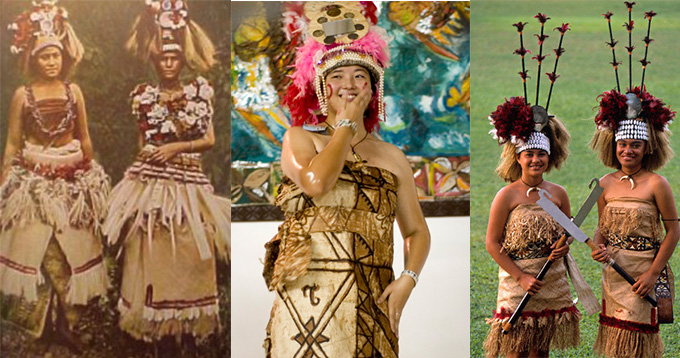 Samoa, of the Polynesian group, has weddings with tradition of a tribal nature. Brides wear gowns of mulberry tree bark, although the tulga headpiece is only for esteemed individuals. Tulgas used to be made of human hair, but today they dye chicken feathers instead.
Samoa, of the Polynesian group, has weddings with tradition of a tribal nature. Brides wear gowns of mulberry tree bark, although the tulga headpiece is only for esteemed individuals. Tulgas used to be made of human hair, but today they dye chicken feathers instead.
The Nigerian bride will never wear just one ensemble. Almost always the gele, or bubbly head wrap, is also donned.
20/20
1/20


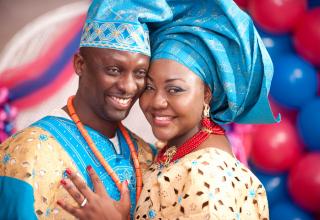





1 Comments